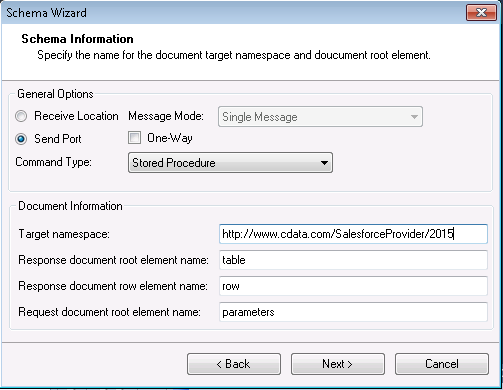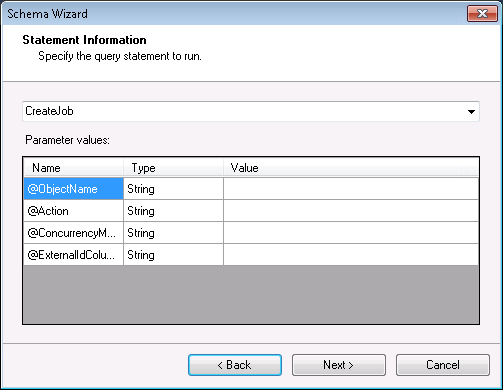Discover how a bimodal integration strategy can address the major data management challenges facing your organization today.
Get the Report →Execute Stored Procedures to Adobe Commerce in BizTalk
You can use stored procedures provided by the CData BizTalk Adapter for Adobe Commerce to automate working with Adobe Commerce data in BizTalk. Stored procedures implement actions available in the underlying API.
Stored procedures implement Adobe Commerce actions that cannot be represented as SELECT, INSERT, UPDATE, and DELETE statements. This article shows how to generate a schema for a stored procedure. You can use the schema to execute the stored procedure from a send port.
Add the Adapter to Your Project
Use the Add Adapter wizard to add the adapter to a BizTalk Server project in Visual Studio. The adapter will return metadata about the inputs of the stored procedure and its results. This metadata is needed to create the schema.
- Right-click on the project in the Solution Explorer and click Add -> Add Generated Items.
- Select Add Adapter Metadata in the resulting dialog box.
- In the resulting Add Adapter wizard, select the adapter from the list.
- In the Port menu, leave the selection blank. Or, select a receive location or send port that has been configured to use the Adobe Commerce Adapter.
![CData Adapters in the Select Adapter wizard. (Salesforce is shown.)]()
On the Connection String page, enter authentication credentials and other connection properties if they were not already configured in the send port or the receive location.
Below is a typical connection string:
OAuthClientId=MyConsumerKey;OAuthClientSecret=MyConsumerSecret;CallbackURL=http://127.0.0.1:33333;Url=https://myAdobe Commercehost.com;InitiateOAuth=GETANDREFRESHAdobe Commerce uses the OAuth 1 authentication standard. To connect to the Adobe Commerce REST API, you will need to obtain values for the OAuthClientId, OAuthClientSecret, and CallbackURL connection properties by registering an app with your Adobe Commerce system. See the "Getting Started" section in the help documentation for a guide to obtaining the OAuth values and connecting.
You will also need to provide the URL to your Adobe Commerce system. The URL depends on whether you are using the Adobe Commerce REST API as a customer or administrator.
Customer: To use Adobe Commerce as a customer, make sure you have created a customer account in the Adobe Commerce homepage. To do so, click Account -> Register. You can then set the URL connection property to the endpoint of your Adobe Commerce system.
Administrator: To access Adobe Commerce as an administrator, set CustomAdminPath instead. This value can be obtained in the Advanced settings in the Admin menu, which can be accessed by selecting System -> Configuration -> Advanced -> Admin -> Admin Base URL.
If the Use Custom Admin Path setting on this page is set to YES, the value is inside the Custom Admin Path text box; otherwise, set the CustomAdminPath connection property to the default value, which is "admin".
![The connection string properties used by the Adobe Commerce Adapter. (Salesforce is shown.)]()
Generate the Schema
After you enter connection properties in the Add Adapter wizard, the Schema wizard is displayed.
- On the next page, Schema Information, select the Send Port that you have configured to use the Adobe Commerce Adapter.
- If you have configured the CData Adobe Commerce Adapter in a solicit-response send port, disable the One-Way option.
- In the Command Type menu, select Stored Procedure.
![Schema options for a stored procedure. (Salesforce is shown.)]()
- Select the stored procedure from the menu and enter the values for the input parameters.
![Input parameters and values. (Salesforce is shown.)]()
- Confirm the settings in the summary displayed by the wizard and click Finish to generate the schema.xsd file.
Processing Schemas
To use schemas in a simple BizTalk application, see the tutorial.










